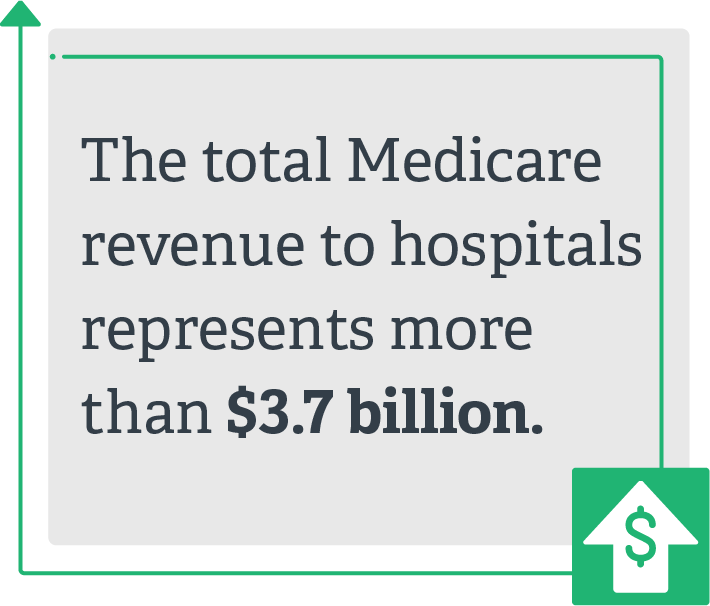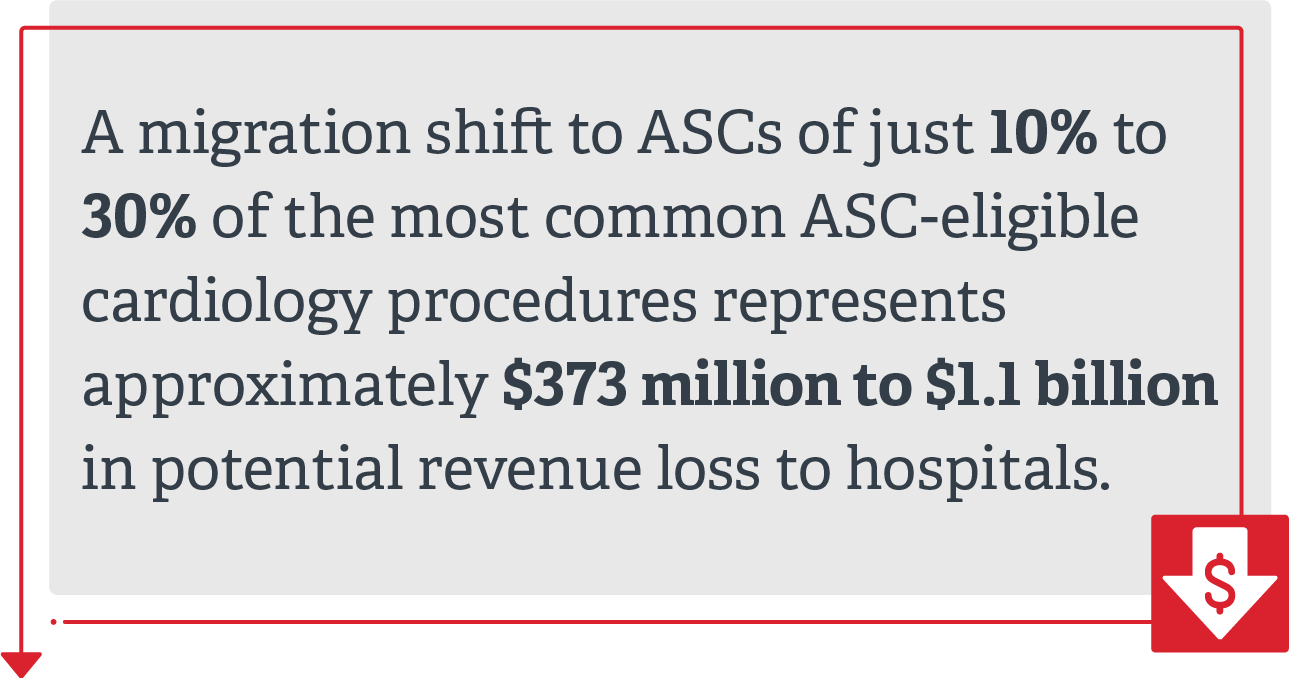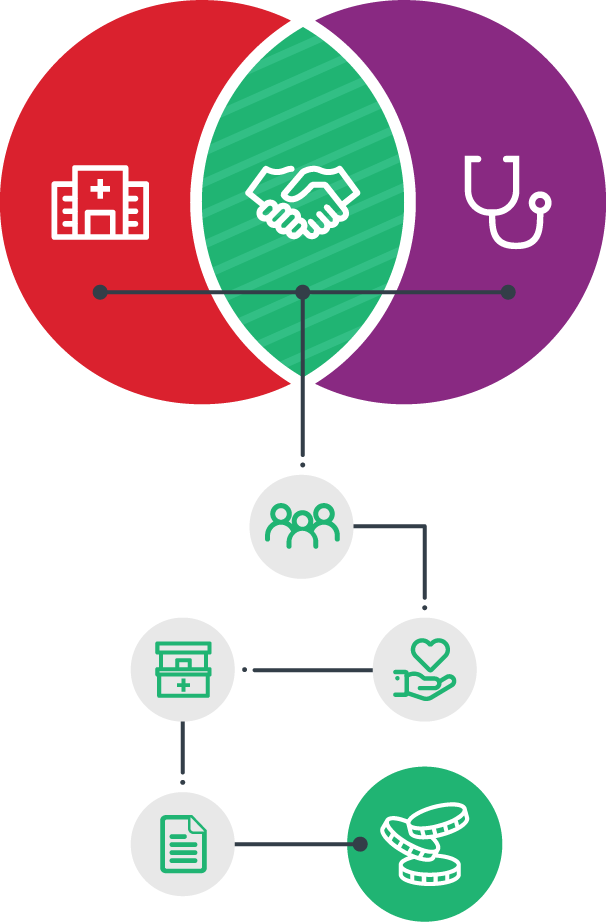As the US healthcare system continues to grapple with the implications of the COVID-19 pandemic, and as states begin reopening facilities for elective procedures, healthcare providers are facing limitations on providing timely elective cardiovascular (CV) care—limitations that, coupled with the risk of COVID-19 exposure, can potentially impact morbidity and mortality.
For both urgent and elective procedures, the need for a COVID-19-free environment has escalated the demand for alternative sites of service by patients and providers.
To aid in striking the delicate balance between safe and timely care, the American Heart Association, along with 14 CV societies in North America, has offered guidance on a phased approach to safely reintroduce diagnostic and interventional CV procedures during the pandemic.1 Part of this strategy involves shifting lower-acuity and routine diagnostic procedures out of the hospital to expand inpatient capacity for sicker patients.
As pressing as it is, COVID-19 is only the most recent factor accelerating the migration of surgical procedures to outpatient (OP) settings—and it only heightens the need for hospitals to understand the complexity of merging CV services with an ambulatory surgery strategy.
An Ongoing Migration
Over the past two years, CMS has implemented ambulatory surgery center (ASC) rule changes that have the potential to dramatically alter the way hospitals and health systems run their CV service lines. As a result of those rule changes, 14 new primary cardiac catheterization and coronary intervention procedures were added to the ASC Medicare-approved list.
The addition of these codes opens access to ASCs for cardiology services, which had historically been limited to pacemaker procedures. Diagnostic procedures can now be performed in ASCs and office-based catheterization labs (OBLs). These trends suggest that interventional procedures will be next to follow. In some instances, commercial payers are already covering interventional procedures in the ASC setting.
These new rules are forcing hospitals and health systems to reexamine their current strategies for cardiology and CV surgical services and develop alternatives for addressing the impending migration of their CV service offerings into OP settings. At the same time, expanding the eligibility for catheterization procedures to an ASC setting could lead to significant payer and patient savings and provide new opportunities for hospitals and health systems to partner with physicians.
Cardiovascular-Related CMS Rule Changes in 2019 and 2020
On November 21, 2018, CMS released its final ruling2 on the 2019 Outpatient Prospective Payment System (OPPS) for ASCs. In this ruling, the definition of a surgical procedure was amended3 to include HCPCS Level II and Category III CPT codes that:
» Have been determined not to pose a significant safety risk.
» Would not be expected to require an overnight stay when performed in an ASC.
» Are separately paid under the OPPS.
The revision of this definition added 11 new cardiac catheterization–related codes to the ASC Medicare-approved list.
On November 1, 2019, CMS released its final ruling on the 2020 OPPS for ASCs. The 2020 rule added three new separately payable coronary intervention procedures to the ASC Medicare-approved list, along with three associated add-on procedures.4 Table 1 lists the separately payable procedure codes added in 2019 and 2020.
Table 1: Cardiac Catherization and Coronary Intervention Codes
Added to the Medicare ASC Approved List in 2019 and 20205

In both the 2019 and 2020 final rulings for the OPPS for ASCs, the Ambulatory Surgery Center Association, American Medical Association, and American College of Cardiology consistently advocated6 for more CV codes to be added to the list, beyond those codes approved in 2019 and 2020, which clearly indicates the momentum in the trend for enhancing access to CV procedures in the ASC setting. These codes include diagnostic left and right heart catheterization procedures, as well as cardiac output measurement studies.7 Many commercial payers, such as UnitedHealthcare, already allow these procedures in the ASC setting, and it is only a matter of time before CMS follows suit.
Implications for Hospitals
The addition of cardiac catheterization codes to the ASC-approved list allows patients to access lower-cost alternatives to hospital-based catheterization labs, where Medicare facility payments  (separate from physician payments) are more than double the corresponding ASC rate, in most instances, and likely represent an even greater differential with commercial payers. Shifting these procedures, which are dominated by Medicare patients, from HOPDs to ASCs has the potential to save Medicare over $500 million annually in facility fees (see table 2). When cardiac catheterization revenue is combined with revenue from coronary intervention and pacemaker procedures, the total value in Medicare revenue to hospitals, based on 2018 Medicare experience data, represents more than $3.7 billion.
(separate from physician payments) are more than double the corresponding ASC rate, in most instances, and likely represent an even greater differential with commercial payers. Shifting these procedures, which are dominated by Medicare patients, from HOPDs to ASCs has the potential to save Medicare over $500 million annually in facility fees (see table 2). When cardiac catheterization revenue is combined with revenue from coronary intervention and pacemaker procedures, the total value in Medicare revenue to hospitals, based on 2018 Medicare experience data, represents more than $3.7 billion.
Of course, not all patients will be eligible to receive care in an ASC due to comorbidities and other risk factors. A patient’s location and insurance carrier will also be factors in where they receive care. However, a migration shift to ASCs of just 10% to 30% represents approximately $373 million to $1.1 billion in potential Medicare revenue loss to hospitals.
As a result of COVID-19, we expect that the migration will likely be accelerated as providers and patients seek a COVID-19-free environment for CV elective diagnostic and interventional procedures, and will continue until there is an effective treatment or vaccine for COVID-19. Once the case types have moved out of the hospital, they are unlikely to move back. Thus, the potential for revenue loss in hospitals is significant and may pose an even greater financial risk than the new Medicare OPPS 2020 approval of total knee arthroplasty in the ASC setting.8

Table 2: Cardiology CPT Codes on the Medicare ASC Fee Schedule as of January 1, 2020 (Sample)

This CMS ASC rule change enables cardiology procedural migration to ASCs and can have material implications on many (if not most) organizations; however, the true impact of these changes will vary by state, hospital, and service line structure based on the considerations identified below.
» Hospital-Physician Partnerships
The hospitals with the highest potential for financial risk will be those lacking alignment vehicles with local independent cardiologists. Such hospitals may have historically relied on physicians who needed the hospital facility to provide care to their patients but had not formalized any relationships. Without contractual agreements in place, independent cardiologists are free to pursue joint ventures or to establish their own ASC or hybrid OBL/ASC facility.
This risk is largely mitigated for hospitals with some sort of contractual relationship with physicians, particularly if it is an employment arrangement with a strong noncompete. However, hospitals holding contractual relationships such as professional services agreements (PSAs) are at moderate risk of losing their cardiology partners if the partnerships are no longer financially advantageous to the physicians. Regardless, hospitals need to evaluate their cardiology affiliation arrangements and potentially find alternative ways to partner (e.g., joint ventures) with cardiologists who opt to invest in their own OBLs or ASCs rather than become (or remain) hospital employees.
» Service Line Design
Health systems with organized CV programs will want to rethink their service line structure and strategy to enhance their ambulatory CV strategy, with specific consideration of adding ASC capacity to the strategic mix. There are more options regarding physician alignment that include ASC joint ventures, as well as more traditional arrangements (comanagement, etc.). In addition, with innovations in technology and virtual care, there are more opportunities for remote robotic cardiac procedures in both diagnostic and therapeutic areas that may allow for more efficient growth of service market coverage in both ambulatory and hospital settings.
While most hospitals and health systems operate under mixed models of employed and independent physicians, many focus on creating Centers of Excellence that promote strong physician leadership in service line design and management. Recognizing the likelihood that more sites of care will emerge through new ASC partnerships and innovation, it will be increasingly important to develop CV service line governance and management structures that promote a seamless patient experience and, ideally, a single access point for care.
» Payer Requirements
Physicians are often directed by patient benefits to determine the site of service for surgical procedures. As payer-mandated pre-authorization for OP hospital-based surgeries and other ancillary services becomes more commonplace, physicians will likely direct more patients to an ASC, if one is available, rather than to a hospital. This negates the employed physician model, as the payer is essentially directing and mandating the site of service for the procedure.
Payers are aware of the financial implications associated with the new ASC regulations that enable migration and reduce the cost of care. Some have already implemented policies or payment incentives in alternative payment models, pushing organizations to shift all applicable services to these lower-cost settings. Consequently, payer benefit designs that are responsive to employer demands to reduce the total cost of care will play a significant role in sites of service, despite the healthcare organization’s payer strategy or the hospital’s likely financial losses for these services.
» Management Companies in ASC Joint Venture Partnerships
To develop and manage ASC joint ventures, numerous hospitals have entered into management relationships with third-party companies. ASC joint venture operating agreements often contain restrictive covenants that prevent hospitals or health system partners from developing new ASC joint ventures within a predefined area without the participation and approval of the manager. As a result, a hospital or health system may be faced with the decision to either forgo developing new centers or be required to work with a third-party manager who lacks experience with developing, leading, or managing CV services. The ASC operating agreement may also have language that gives the management company a deciding vote in whether to include CV services in new ASC joint ventures.
Quantifying Risk and Determining Strategic Options
Unless hospitals are proactive in adapting to these disruptions, their revenue and operations will be affected. To start, hospital leadership should consider developing new strategies for CV services in order to define a pathway to address these changes. Implicit within any strategy, all hospitals need to quantify the risk of seeing diagnostic and interventional cardiology cases migrate to the ASC setting, which requires an understanding of:
» The size of the hospital’s CV service line.
» Patient access limitations attributed to COVID-19.
» Payer mix.
» Underlying market dynamics within primary and secondary service areas.
» Infrastructure.
» Any existing partnerships.
» State-specific cardiology, ASC, and/or licensing requirements.
Hospitals must also have long-term plans for their cardiology service lines. While numerous tactics exist, it will be important to determine which of the following strategic options are appropriate:
» Determine when CV volume could migrate from the hospital to the ASC setting, and create a plan to offset this exposure.
» Assume that volume reductions at the hospital attributed to COVID-19 will continue, and consider long-term implications.
» Aggressively pursue alignment agreements with community-based cardiologists who are either independent or under a PSA to reduce any potential exposure to volume loss.
» Develop or acquire an ASC as the sole owner.
» Build a de novo ASC as a joint venture with local cardiologists and/or cardiology groups.
» Purchase a majority or minority stake in an existing ASC that has the capability to add CV services.
Hospitals without long-term cardiology strategic plans will likely face financial and clinical challenges in their cardiac service lines—challenges that will only proliferate as payers strive to reduce healthcare costs and direct care to alternative sites of service.
Formulating the right ambulatory strategy for the CV service line will take time and resources. Hospitals that are unfamiliar with planning for the magnitude of clinical service migration to an ambulatory model that is anticipated for cardiology services may need the support of an experienced multidisciplinary team to successfully navigate the differences between hospital and ASC operations. To that end, it is imperative that hospital leaders understand the complexity of merging CV services with an ASC strategy, as well as the appropriate resources, key stakeholders, and proactive approaches needed to make sure they are prepared.
1 Wood DA, Mahmud E, Thourani VH, Sathananthan J, Virani A, Poppas A, Harrington RA, Dearani JA, Swaminathan M, Russo AM, Blankstein R, Dorbala S, Carr J, Virani S, Gin K, Packard A, Dilsizian V, Légaré J-F, Leipsic J, Webb JG, Krahn AD, “Safe Reintroduction of Cardiovascular Services during the COVID-19 Pandemic: Guidance from North American Society Leadership” (Journal of the American College of Cardiolo-gy, 2020), https://doi.org/10.1016/j.jacc.2020.04.063
2 https://www.govinfo.gov/content/pkg/FR-2018-11-21/pdf/2018-24243.pdf
3 Ibid., p. 59030
4 https://www.govinfo.gov/content/pkg/FR-2019-08-09/pdf/2019-16107.pdf, p. 39544
5 These are the separately payable approved codes
6 https://www.regulations.gov/document?D=CMS-2019-0109-2996
7 https://www.regulations.gov/document?D=CMS-2018-0078-2453
8 https://www.beckersasc.com/asc-news/surgery-migration-catching-the-confetti.html

